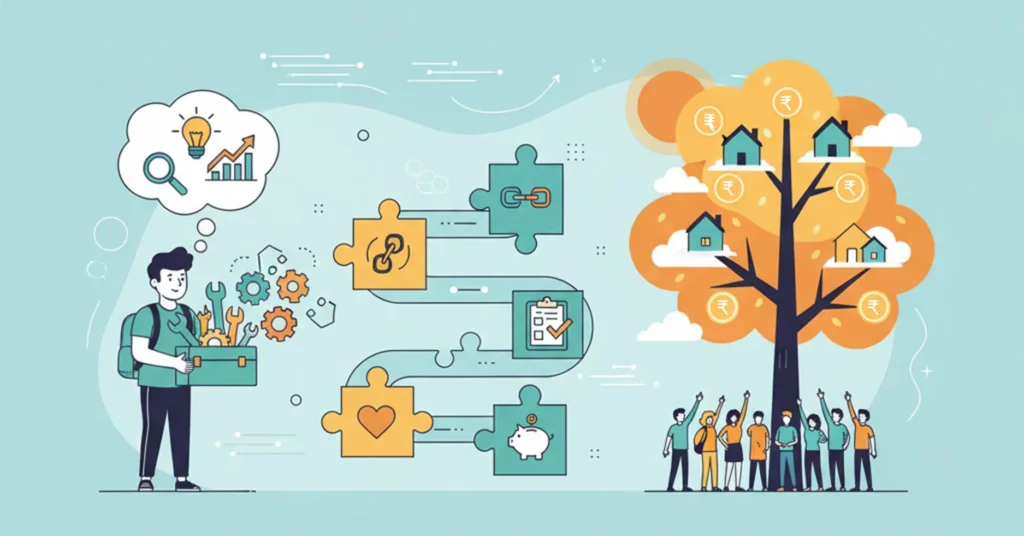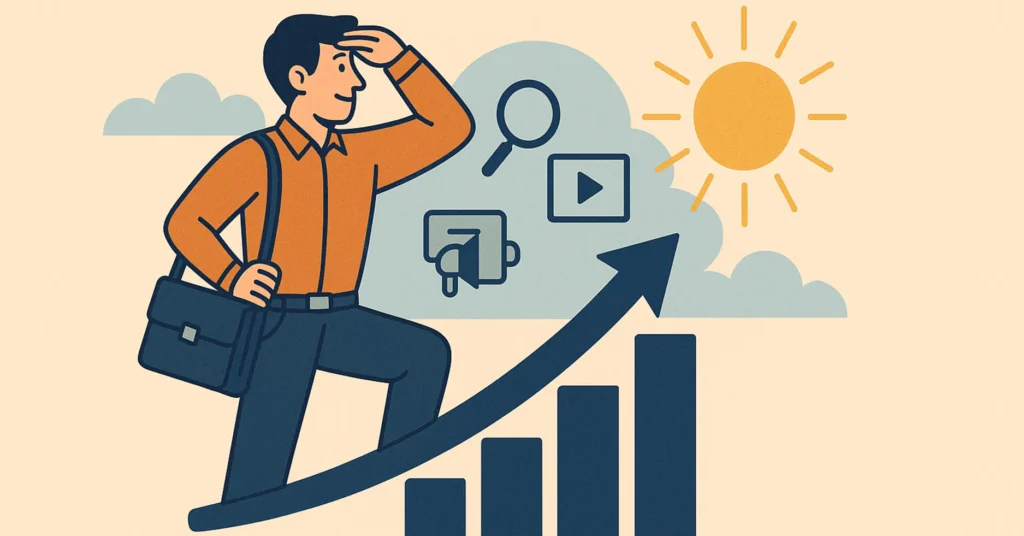How to Become a Data Scientist After Graduation – A Step-by-Step Guide

Table of Contents
ToggleIntroduction
Are you a recent graduate and confused about what to do next?
You’ve heard a lot about Data Science. You may have seen posts saying “Data Scientist is the sexiest job of the 21st century.” But the question is – how do you actually become a data scientist after graduation?
If you’re from a B.Sc., B.Tech, or even B.Com background, don’t worry. This blog is for you. We’ll give you a step-by-step guide using simple English and practical tips.
Stop doubting your potential — the journey to a high-paying data science career starts with one step.
1. What Does a Data Scientist Actually Do?
Before you start learning, it’s important to know what the job is all about.
A data scientist collects, cleans, and analyzes data to help companies make better decisions. They also build models using machine learning to predict the future.
For example:
An e-commerce company predicts which products you will buy.
A hospital uses data to find disease patterns.
A bank detects fraud using machine learning.
The role is different from a data analyst, who mostly works on reports and dashboards. Data scientists go deeper into algorithms and predictions.
Learn more from IBM’s data science overview.
2. Are You Ready for This Journey?
Data science is exciting, but not everyone enjoys it.
Ask yourself:
Do I enjoy solving puzzles or logic problems?
Am I okay with learning programming?
Can I work with numbers and charts?
If you answered “yes,” that’s a good sign. Even if you are from a non-technical background, you can succeed with practice.
3. Learn the Right Skills (Core Knowledge Required)
To become a data scientist, you must master a few core skills.
Let’s break them down:
Programming (Start with Python)
Python is easy and powerful.
Learn basics: variables, loops, functions, and libraries.
Practice with libraries like Pandas, NumPy, and Matplotlib.
Start free with W3Schools Python Tutorial
Math & Statistics
Learn statistics basics like mean, median, standard deviation.
Understand probability, linear regression, and hypothesis testing.
- Beginner-friendly resource: Khan Academy Statistics
SQL
SQL helps you work with databases.
Learn how to fetch, filter, and join data from tables.
Data Visualization
Tools: Tableau, Power BI, Matplotlib.
You should be able to create graphs, charts, and dashboards.
Machine Learning (ML)
Understand basic ML concepts like supervised and unsupervised learning.
Use tools like scikit-learn to build simple models.
Take that step today and unlock opportunities you never imagined!
4. Choose a Learning Path That Works for You
There are three main ways to learn data science:
A. Join a Training Program
Offline or online programs give you structure, mentors, and doubt support.
At Learn2Earn Labs, we offer beginner-friendly data science courses with project-based learning and placement support.
B. Learn Online (Self-Learning)
You can also use platforms like:
C. Follow Books & YouTube
Some great YouTube channels:
Krish Naik
StatQuest
freeCodeCamp
If you need structure + support, a course is better. But if you love independent learning, start free.
5. Start Building Small Projects
Skills are not enough. You must show what you can build.
Start with small projects like:
Movie recommendation system
Sales prediction using linear regression
Customer segmentation using clustering
Fake news detection using NLP
Use Kaggle Datasets for practice.
Upload your code to GitHub and keep your work public. This will help during interviews.
6. Create Your Data Science Portfolio
Your portfolio is your digital resume. It proves you can work on real data.
Here’s what to include:
About Me section (your background + why data science)
List of 2–4 projects with short summaries
GitHub and LinkedIn links
Resume download button
You can make it using:
WordPress
GitHub Pages (free)
Wix or Carrd
Your degree gave you knowledge — now let data science give you the future you deserve.
7. Apply for Internships or Entry-Level Jobs
As a fresher, look for these roles:
Data Science Intern
Junior Data Scientist
Business Analyst
Data Analyst
Platforms to find jobs:
Don’t wait for big MNCs in the beginning. Start with startups. You’ll get real work experience and learn faster.
8. Prepare for Data Science Interviews
To crack interviews, you must:
Revise Python, SQL, ML concepts
Practice case studies (e.g., how to reduce churn rate)
Solve coding problems (e.g., Leetcode, HackerRank)
Also, prepare answers for:
Why data science?
Tell me about your project.
What is overfitting? What is p-value?
Use sites like InterviewBit to practice questions.
9. Keep Learning & Upskilling
Data science is always evolving. So keep learning!
After your basics, go deeper into:
Deep Learning (Neural Networks, CNN, RNN)
Natural Language Processing (Chatbots, Sentiment Analysis)
Big Data tools (Spark, Hadoop)
Cloud platforms (AWS, Azure, Google Cloud)
Join communities:
You’ll stay updated and meet people from the same field.
10. Bonus Tips for Non-CS Graduates
Are you from B.Com, BA, BBA, or B.Sc (non-CS)?
No problem!
Follow these extra tips:
Focus more on Excel + Python + SQL
Get certifications to build credibility
Build more practical, business-oriented projects
Learn how to use Power BI or Tableau for dashboards
You can also explore Data Analytics as a starting point. Later, you can move to data science.
Conclusion: Your Journey Starts Now
You’ve just read a complete step-by-step guide to becoming a data scientist after graduation.
To summarize:
Understand the role
Learn the right skills (Python, SQL, ML)
Join a course or self-learn
Build real projects and portfolio
Apply for internships and keep learning
Data Science is not only for IIT students or coders. With dedication and the right path, anyone can do it.
So don’t wait.





